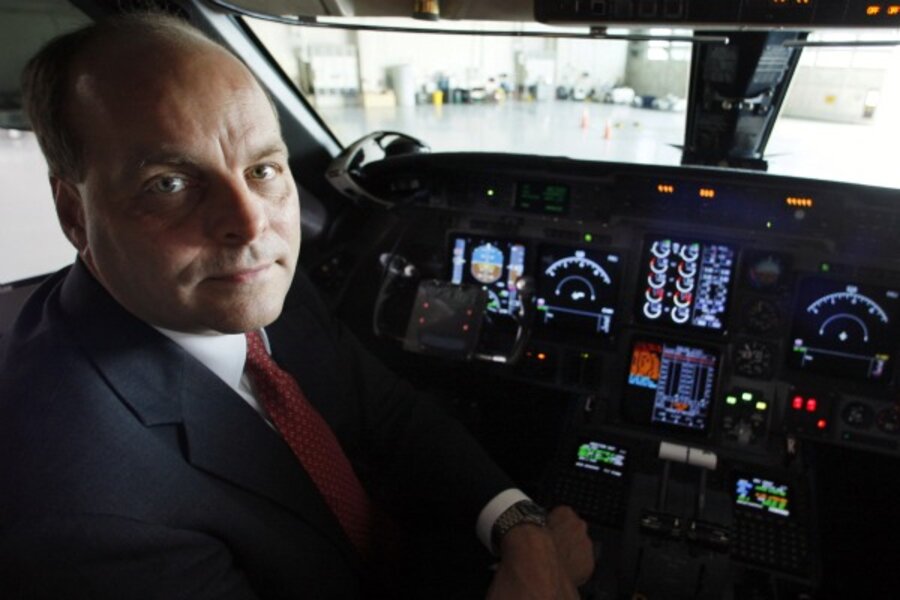Sleeping air-traffic controllers show that fatigue issue still plagues FAA
Loading...
Following a string of incidents involving sleeping air-traffic controllers, the FAA has ordered an additional controller to be added to the overnight shifts at 27 airports. On Thursday an FAA executive resigned amid the growing outcry over the incidents, which have energized longstanding concerns over fatigue among transportation personnel.
The latest such incident occurred at 2 a.m. Wednesday, when the pilot of a medical plane was unable to reach the controller on duty at the Reno-Tahoe International Airport in Nevada. The pilot decided to land after 16 minutes, citing concern over the health of a patient he was transporting. According to the FAA, it was the sixth case of an unresponsive controller this year. All the controllers involved in the incidents have been suspended, the FAA said.
“Air traffic controllers are responsible for making sure aircraft safely reach their destinations,” said Federal Aviation Administrator Randy Babbit in a statement Wednesday. “We absolutely cannot and will not tolerate sleeping on the job.”
Hank Krakowski, head of the FAA's Air Traffic Organization, which employs the nation’s air-traffic controllers, resigned Thursday. In a statement announcing Mr. Krakowski’s departure, Mr. Babbit noted that public confidence "begins with strong leadership.”
The decision to add an additional controller to 27 airports that currently have just one controller on the overnight shift was praised by the Business Travel Coalition, a passenger rights group.
“There should always be two controllers on duty at any given time," Kevin Mitchel, chairman of the Business Travel Coalition, writes in an email. "It is a stressful job and like pilots, fatigue causes them to fall asleep as well."
In fact, the issue of fatigue has been a safety concern for air travel and other forms of transportation for decades.
"The NTSB has a most-wanted list of safety improvements,” says Mark Rosekind, a Member of the National Transportation Safety Board. “Fatigue has been one of the items on that list since it was first created in 1990. It’s been in our focus for over 20 years.”
Dr. Rosekind, a clinical psychologist who has studied sleep for NASA, says worker performance drops 30 percent at night.
“The myth is that the more nights you work, the more your body adjusts to the night work," Rosekind says. “Physiologically, your internal clock does not adjust."
Even as transportation officials grapple with how to handle controller fatigue, a NASA program, The Aviation Reporting Data Base, allows aviation workers to have their say. The program invites controllers, pilots, and others to anonymously report irregularities and make suggestions for how they could have been avoided.
Controllers whose reports appear in the database describe juggling multiple planes on runways that are sometimes hard to identify. For example, a controller at Hobby Airport in Houston said that a plane was instructed to taxi across a runway where another plane was about to land last July. The mistake was noticed in time.
“With all of the closed runways and taxiways, and the bad weather and new taxi rules, I was feeling a little fatigued,” said the controller.
A controller at Flying Cloud Airport in Eden Prairie, Minn. described a plane landing on the wrong runway one night last August. The controller said the problem could not be identified until after the plane touched down, because of the angle of the control tower to the runway.
“The number of aircraft landing on the wrong runway at this airport is out of control,” said the controller. “It was not an issue tonight, but someday it will be, and that thought is scary."
It's unclear whether the controllers added to overnight shifts will be new hires or come from a reshuffling of staff. As troublesome as the fatigue problem may be, some officials are wary of devoting added resources to low-traffic times of the day.
“This increase in staffing, when there is little to no traffic, also misdirects our resources and focus away from congested air traffic control facilities,” Rep. John Mica (R) of Florida said in a statement.
Air traffic controllers made about $107,000 a year in 2009, according to the most recent data available from the Bureau of Labor Statistics.
Last month, an air-traffic controller at Washington’s Reagan National Airport was suspended for sleeping on the job. Though no one was injured, two planes were forced to land without clearance after being unable to rouse the controller.
Other incidents of unresponsive controllers occurred at a Preston Smith International Airport in Lubbock, Texas, on March 29, and at King County International Airport/Boeing Field in Seattle, where a controller had fallen asleep once during a shift on April 11, and twice during a Jan. 6 shift.





